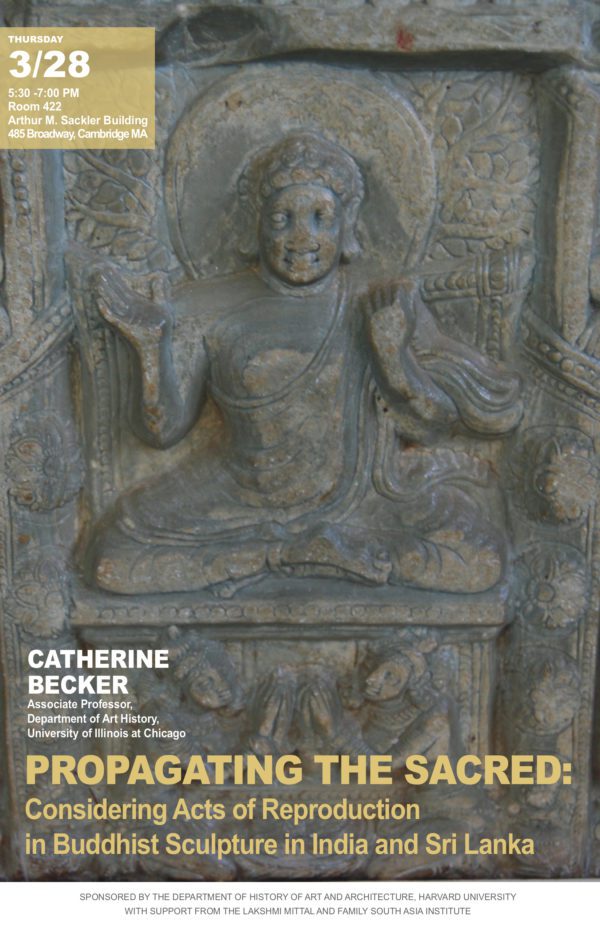Catherine Becker, Associate Professor in the Department of Art History at the University of Illinois at Chicago, will join Jinah Kim, Gardner Cowles Associate Professor of History of Art & Architecture at Harvard University, in conversation.
Sculpture from early Buddhist sites in South Asia might be accused of becoming repetitive or redundant, with key motifs appearing repeatedly across a single site or certain types of images, such as the Andhra-style Buddha, populating a multitude of sites. Although the desire to generate merit for many donors and the regional popularity of subjects or narratives might partially explain the emergence of this culture of visual excess in the second and third centuries CE, this paper adopts the Bodhi tree as a metaphoric and literal model for the reproduction and dissemination of sacred imagery. An examination of sculpture from Buddhist sites presently in Andhra Pradesh, Telangana, and Sri Lanka suggests that the repetition of key imagery might be understood to be indexically precious and a worthy offering to Buddhist communities. Moreover, this consideration of material and visual connections across early Buddhist sites might also encourage us to consider how the act of reproduction continues to forge meaningful visual links between Buddhist communities across time and space.





